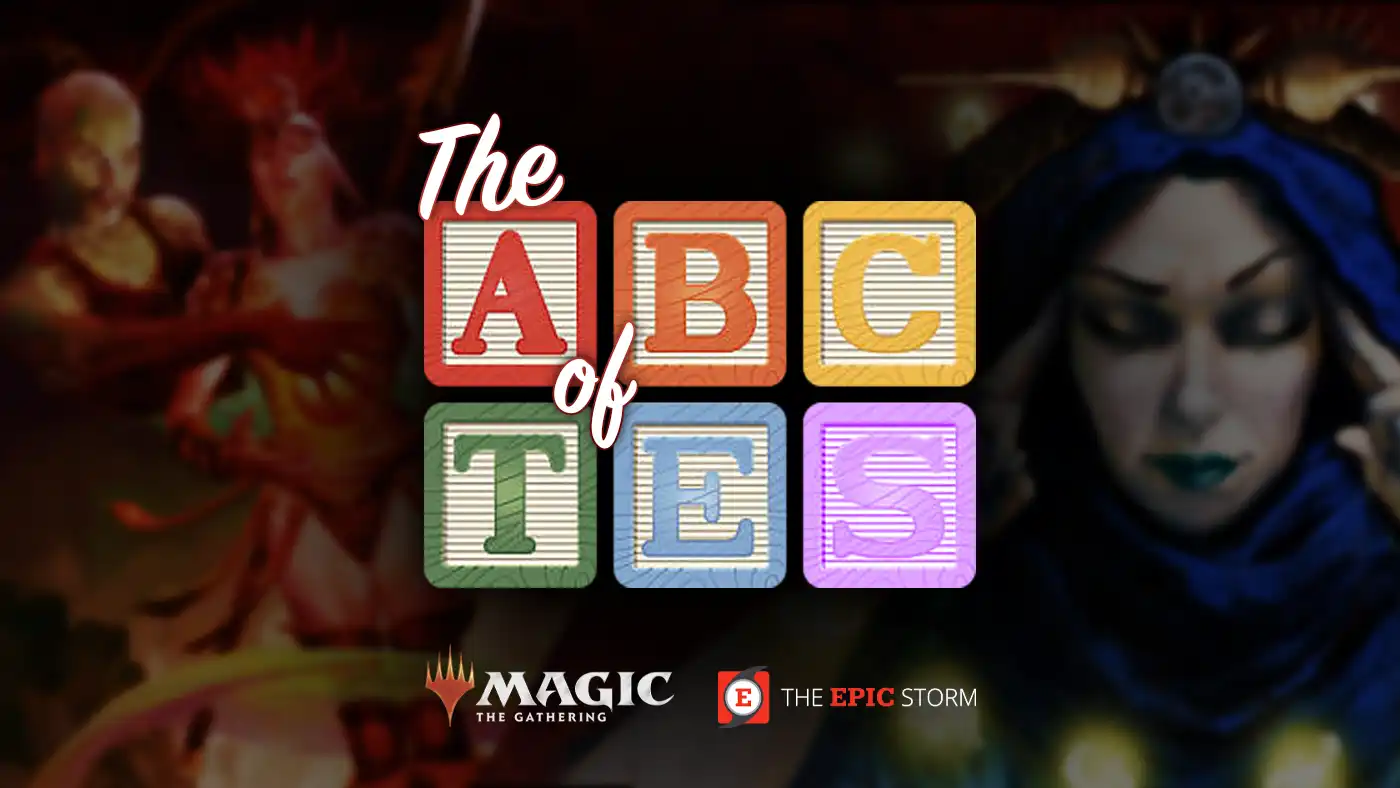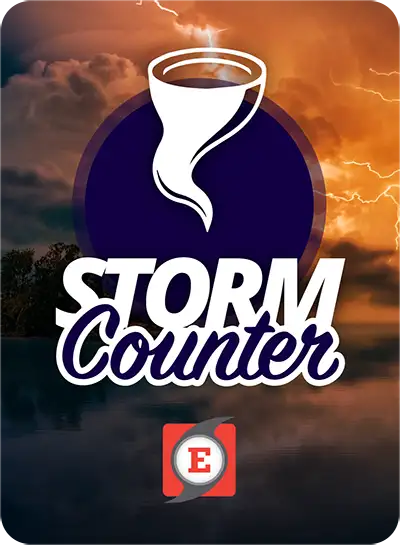More fundamental than anything else, being able to cast all of the spells in The EPIC Storm is one of the most important aspects to the deck. This is why the manabase is built the way it is. Some of the specific patterns of which lands to put into play can be unintuitive on base Legacy heuristics, however. Understanding this four-color manabase is one of the keys to putting oneself into winning positions fast enough.
Colors of Mana
[[Island|]]
[[Swamp|]]
[[Forest|]]
Each color of mana in The EPIC Storm has an explicit purpose to the overall game plan of putting a storm engine on the stack, protecting it, and winning the game as fast as possible. As a function of math, using only dual lands, the fastest way to get access to all four colors of mana is with two lands. The manabase is built with this in mind with pairs of lands to put together based on how the other play patters of the deck work. Colors one needs in early turns, such as blue for set up cantrips, are also on other lands that have combo colors. This means that playing lands that are useful for one situation and in another different situation is best. A proper mix of colors allows all of one's mana to be used every turn.The most important aspect of lands is they are permanent mana sources and one gets to tap them for multiple turns. This is a big separation from [[Lotus Petal]]. While this may seem obvious, recognizing the power here of designing mana to use all of it every turn is important. Dual lands get better because they provide options on the color they tap for each turn. In current iterations of The EPIC Storm, using more turns and getting more value out of one's lands is extremely important.There are two types of turns in The EPIC Storm.
"Setup Turns" are turns where one is sculpting towards a hand that can win the game. These turns often involve casting cantrips, developing [[Wishclaw Talisman]]s, or casting [[Burning Wish]]s for value. This is in contrast to a
"Combo Turn" which is any turn in which one puts a combo engine on the stack or tries to win the game. Sometimes set-up turns can turn into Combo turns through an exceptional cantrip or an opponent's action, but in general that division holds.Blue is generally a setup color, and is not needed that often on the combo turn, barring some rare scenarios. Casting cantrips or bounce spells to create a window at the proper time is really its role. Black and red are both very similar colors. They both have rituals and tutor pay offs. Sometimes a play of casting a [[Wishclaw Talisman]] or [[Burning Wish]] and passing the turn is a reasonable set up or an option to bait out a counter spell. Green is a protection color. [[Veil of Summer]] is the only main deck green card, but in post-board games, it gets more interesting. [[Carpet of Flowers]] can either be a set up card or a ritual, which gives insane flexibility to green mana. Knowing the role of a color of mana in at a given point informs how high of a priority it is to fetch.
Dual Lands
[[Underground Sea|]]
[[Tropical Island|]]
[[Volcanic Island|]]
Once one understand the role of a given color, understanding the dual lands that support the play patterns that TES uses to win the game becomes the next objective. At the most basic level, dual lands give one color or another color. The
"or" is important to note here. When The EPIC Storm team was first building with [[Wishclaw Talisman]] and [[Veil of Summer]], the team misidentified [[Bayou]] as a card that the deck wanted to play. Being a land that produced two important colors, black and green, seemed good. [[Bayou]], however, does not produce black and green. It produces black
or green. This difference leads to a lot of awkward patterns where something felt off and it took a couple of iterations to realize why. The fundamental ask of The EPIC Storm of its mana is to produce
to cast some rituals, a tutor, and an engine to go on and win the game. Against blue decks, that ask increases to
for a [[Veil of Summer]]. This is a generic breakdown of the play pattern, but is core true enough to build the manabase and fetching patterns around it. [[Bayou]] does not play into this plan of creating
because it tries to fulfill two roles, but can only actually tap for one mana at a time. If one looks back to the color functions, this means that the [[Bayou]] is dead outside of the combo turn, which is a repeat of what [[Badlands]] already does. Recognizing how the deck wanted to operate was a big step forward for building the manabase.[[Underground Sea]] is by far the best land in the deck and should be fetched first by default. Do take care to recognize scenarios when one should apply an exception to this, such as having a red heavy hand. [[Underground Sea]] does two important things. It casts cantrips and then it casts [[Dark Ritual]], the exact pattern the deck wants to play with most of the time. Unfortunately, playing multiple copies of [[Underground Sea]] is not realistic due to all of the other colors in the deck. This leads to a
"Pair Land" for [[Underground Sea]] in [[Taiga]]. [[Taiga]] produces the other two colors and allows for any other land to make the last color necessary. The other nice part about both of these lands is that they both produce a combo color and a utility color. In a non-blue matchup, [[Underground Sea]] and [[Taiga]] can produce
to cast [[Dark Ritual]] and [[Rite of Flame]] to win more quickly because one does not need to protect their win from [[Force of Will]].The next set of pair lands are [[Badlands]] and [[Tropical Island]]. They have many of the same merits as [[Underground Sea]] and [[Taiga]], but are less flexible in terms of game plan. By separating combo colors and utility colors, one might lose access to tempo and mana because the lands do not produce the right colors at the right steps. Against non-blue decks, [[Tropical Island]] loses a lot of utility because it is there to cast cantrips and cannot produce a combo color to win the game with. This lack of combo colored mana needs to be supplemented by a mana rock or by taking more turns. Against non-blue decks, the plan is to close the game as fast as possible, making the option of taking more turns less ideal. Having a [[Lotus Petal]] or [[Mox Opal]] requires a certain quantity of cards available to make all of the mana to put an engine card on the stack. Fetching a [[Tropical Island]] to cast a cantrip is a statement that one needs green mana later in the game, which is not always true. Being conscious of what spells one needs to cast later in the game helps pick which pair of lands to put into play.[[Volcanic Island]] and [[Swamp]] are supplemental lands to the others. There needs to be a strong reason to fetch these lands before others and generally it is determined by the matchup or one's own hand to be contorted in a specific way. [[Swamp]] is a card that exists in the deck to play around [[Wasteland]]. The most common use of an early [[Swamp]] is to play a turn one [[Wishclaw Talisman]] and guaranteed get access to that mana on the next turn. [[Volcanic Island]] is a great third land to have access to. Note that this is different than third land to play. Sometimes a sequence of [[Underground Sea]] into [[Volcanic Island]] into [[Taiga]] is perfectly reasonable to cast a couple of cantrips.
Fetching
[[Polluted Delta|]]
[[Verdant Catacombs|]]
[[Bloodstained Mire|]]
For an article that is supposed to be about how to fetch, this will be the shortest part. Understanding why lands are good is the more fundamental part. The fetch lands in The EPIC Storm are designed to push the patterns that the deck wants. There are no four-of fetchlands in the deck because a mix of lands is more optimal than focusing on any single one. Each fetchland in the deck does not find one of the mana producing lands. [[Verdant Catacombs]] misses [[Volcanic Island]], [[Polluted Delta]] does not find [[Taiga]], and [[Bloodstained Mire]] does not find [[Tropical Island]]. Knowing which lands one can find and which lands one cannot find is important in sequencing. Often thinking about what two lands one wants helps determine the order in which to play fetchlands.As a more general Legacy play pattern, fetching in the upkeep and whenever one needs to cast a spell are the default times to fetch. Fetching on the end step like in Modern does not make sense and can give opponents some odd windows that they might not otherwise have with cards like [[Wasteland]]. [[Wasteland]] and [[Brainstorm]] are the two reasons to delay activating fetchlands. [[Stifle]] is a card that pushes one to activate them, however playing around that card is not reasonable until an opponent shows it to you.One of the key themes of playing TES is being patient with decisions. The more information one has, the better decision one can make. This applies to figuring out tutor targets, what to do with cantrips and even which land to play or fetch. Often, playing a land after resolving a cantrip instead of just playing the one in hand can be better because the information and context of the game has changed. Actions an opponent can take, such as casting a [[Daze]] can change this dynamic. It is generally better to resolve a spell rather than an optimization of a land drop, so paying attention about when to apply this heuristic is important.
tldr
Understanding how the colors in The EPIC Storm function together and how one's hand is set up to take advantage of those lands is the key to fetching properly. Each land has a specific purpose and a pair land to give access to all of the colors in a way that best suits all of the play patterns of the deck. Despite blue duals being
"better" in the context of Legacy overall, the non-blue dual lands in TES tie the manabase together and allow it to truly function.You can find me in the
Storm discord, The EPIC Storm
Patreon, and on
Twitter if you have any more questions about the mana in The EPIC Storm!










